Bremer Bay killer whales: life and death all there in black and white
The inky depths off the southwest coast of Western Australia are the scene of one of nature’s most powerful events.
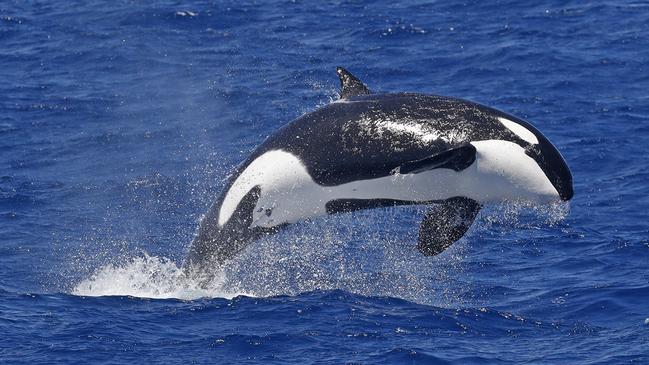
Ladies and gentlemen, you can say goodbye to Australia, as we are now off the continent,” says skipper Andrew “Dundee” Johnson.
They’re not words you hear often in these COVID-19 times, yet here I am on a small vessel on the rolling Southern Ocean, the nearest land just a smudge on the horizon. Our surroundings may appear to lack any notable landmarks but the sea floor has some wild topography. Directly below us, the depth plummets from about 80m to 1000m, and that’s how Dundee knows we’ve arrived. These inky depths hold countless secrets, and gliding beside us, the albatrosses and wedge-tailed shearwaters await the revelation.
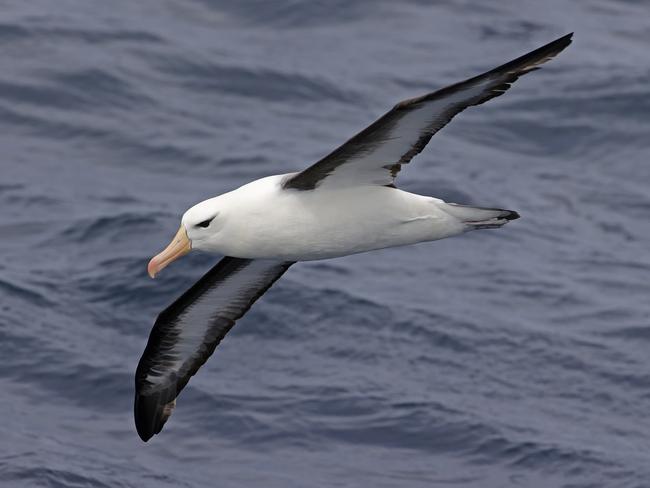
This underwater canyon system comprises a series of ancient rivers that cut deep into the edge of the continental shelf and funnel into the deep, dark Bremer Canyon. It’s an area about 4km in diameter affectionately called “the hot spot”. It supports extraordinary seasonal marine life, thought to be drawn here by methane that bubbles from hydrocarbon stores through deep underwater vents, releasing nutrients and feeding the ecosystem of the deep ocean.
Between January and April each year, currents flush a rich cocktail of life through the canyons, attracting a who’s who of enigmatic marine creatures such as giant squid, sperm whales, blue whales, beaked whales and oceanic sunfish, to name a few. The gluttonous frenzy continues all the way to the top of the food chain. And it’s the ocean’s apex predator, the mighty killer whale, or orca, that’s the star of the Bremer Canyon show.
I’ve boarded Naturaliste Charters vessel Alison Maree in the remote town of Bremer Bay, about 500km southeast of Perth, to travel the 24 nautical miles (about 45km) to the hot spot, about two hours away. Together with local filmmaker Dave Riggs, who first documented the orcas’ presence here, Naturaliste Charters pioneered eco-tourism in the Bremer Canyon.
Lead tour guide and marine biologist Pia Markovic says the hot spot contains a staggering 180 orcas at this time of year, making it the largest known aggregation of orcas in the southern hemisphere.
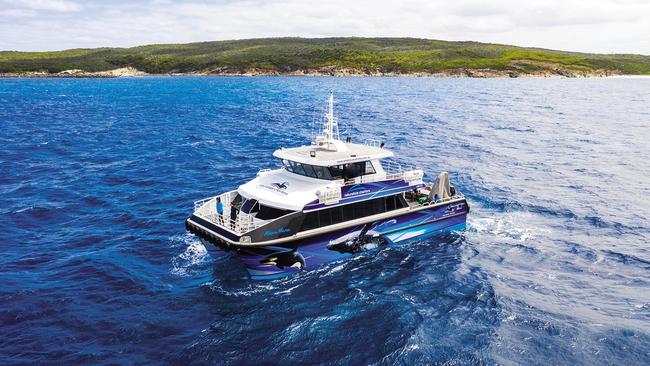
There are many mysteries surrounding these creatures, Markovic says. No one knows where they migrate to, or how many remain here during other seasons. The same individuals come year after year but have not been sighted in other areas known for orcas.
Pulling out of the harbour and punching into moderate swell, these unsolved questions only heighten the sense of adventure. Absolutely anything might happen today.
The first sign of orca activity comes from a surprising source — an oil slick. Markovic explains that this orca population feeds mostly on other marine mammals, and their prey is rich in blubber, which leaves a visible trace on the water. Several older slicks snake across the surface, but the orcas have moved on, and so do we.
Our first sighting is a heart-pounding experience. A family group or pod of about seven orcas is ahead of the boat. Females and juveniles surface and dive, and we scurry for our cameras.
It’s hard to view them as ferocious predators when they look so cute, their elegant markings like black-and-white tuxedos. Minutes later I’m revising that opinion.
As the boat suddenly shifts up a gear, I steady myself on the handrail and lean out to see what Dundee has spotted. Up ahead, wedge-tailed shearwaters circle ominously. There are orcas here too, slicing through the steely ocean. Their numbers grow as more barrel in from all directions.
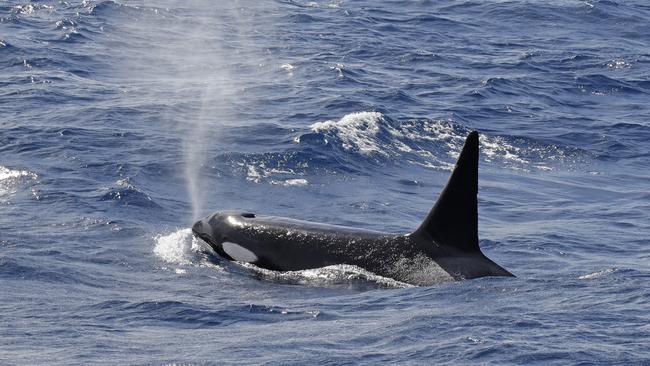
As we arrive beneath the bird swirl, the orcas start lunging. At up to 10m long and weighing 4000kg, they drive walls of water before them. Just metres from the boat, the ocean boils in a flurry of black tails and white bellies.
Dundee is as excited as his guests. “Right beside us — it’s a kill!” he yells from the flybridge. A new colour appears in the sea, the light grey body of the hapless victim rising to the surface, probably a Gray’s beaked whale. The next colour is a shocking plume of red as the gory flesh-tearing begins. Birds dive between orcas for morsels.
Customers and crew alike are shouting and gasping, confronted and awed, filled with the adrenaline rush of the attack. We are witnessing what must be one of nature’s most powerful events.
The loss of one life makes other lives possible, and we see newborn calves learning to hunt, tearing their share of meat from the rapidly disappearing carcass.
Markovic points out the youngest calves, which have slightly red faces.
“They’re born without blubber, so their blood vessels are closer to the surface to keep them warm,” she explains.
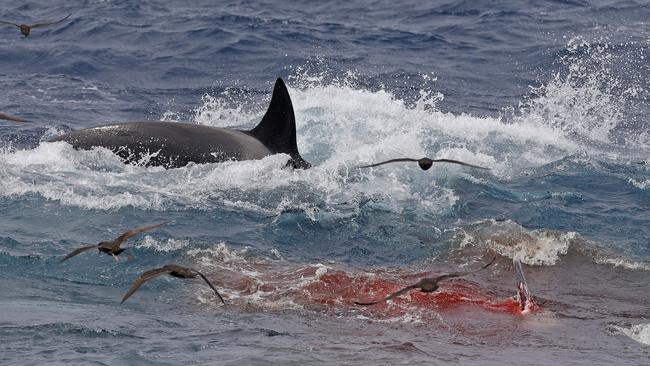
Several matriarchal pods have co-operated for the hunt, with experienced mums and grandmothers at the helm. Other pods arrive at the kill and they, too, receive their share without any apparent animosity. Dundee estimates we are looking at about 60 orcas.
With full bellies, the orcas — many of which are known to the crew by name — become playful. We laugh as adolescents leap and cavort, while others spy-hop, popping their heads above the water to examine us.
“There’s Split-fin,” says Markovic. “She’s the boss of this pod and will have been telling them all what to do during the hunt.” Standing on the bow of the boat, I see the distinctive damaged fin of Split-fin before she rolls on to her belly and disappears, emerging on the other side of the boat to eyeball eager onlookers. We are introduced to the males too, including El Notcho and Fue, with their impressively tall triangular dorsal fins.
The click of camera lenses is continuous. The boat’s professional photographer will contribute images from this trip and others to Project Orca, a research group associated with Curtin University. Its image catalogue identifies animals through individual markings and the shape of their dorsal fins, with a view to understanding migration routes and unlocking the mysteries of Bremer Canyon.
Observations from the tours have also contributed to scientific papers, and data collected by Riggs and Naturaliste Charters were instrumental in the creation of the Bremer Marine Park in 2013, which protects almost 4500sq km of ocean, including habitats ranging from 15m to 5000m deep.
As we leave the hotspot and cruise for home, I join Dundee on the flybridge, where he is still grinning from ear to ear.
“After seven years working on the boat, I’m still as excited as the first day. It’s like being in a documentary,” he says. “Working with the wild weather, the wild animals, it’s just the coolest thing on the planet.”
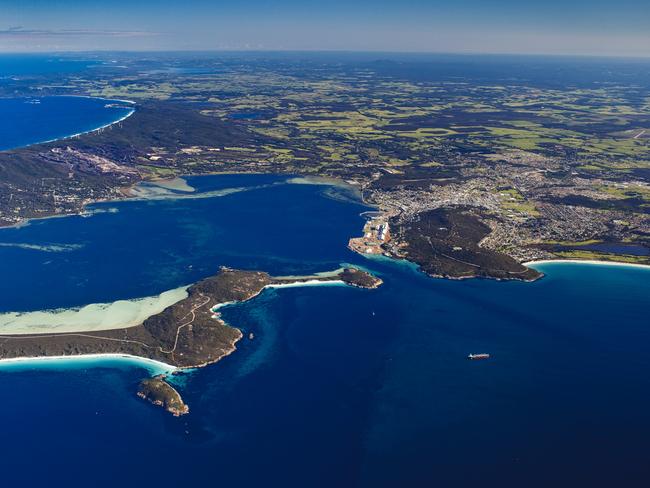
In the know
Naturaliste Charters runs orca tours daily (weather dependent), from 7.45am to 3.30pm, between early January and late April; $385 an adult, $300 a child (minimum age 10); includes snacks, lunch, hot drinks and filtered water. Albany is the nearest town with flights to Perth; a bus and orca tour package is available from $505.
More to the story
The closest accommodation to the harbour is Bremer Bay Beaches Tourist Park, which has a range of cabins and shady camp sites. Bremer Bay Resort offers self-contained units and motel-style rooms. For hosted accommodation with ocean views, try Bremer Bay Bed and Breakfast.
bremerbaybedandbreakfast.com.au
Carolyn Beasley was a guest of Naturaliste Charters and Tourism WA.

To join the conversation, please log in. Don't have an account? Register
Join the conversation, you are commenting as Logout